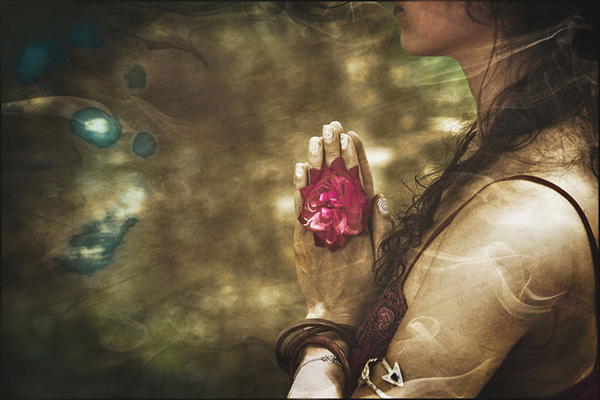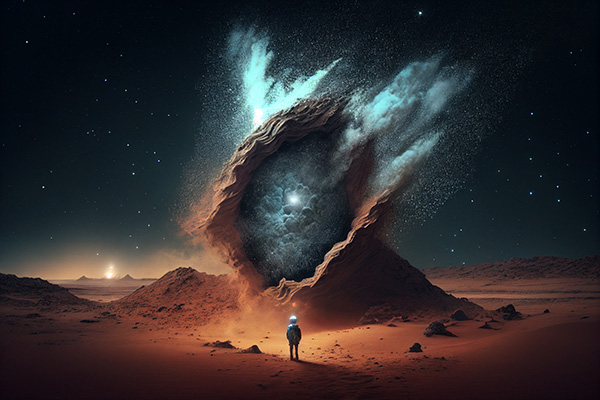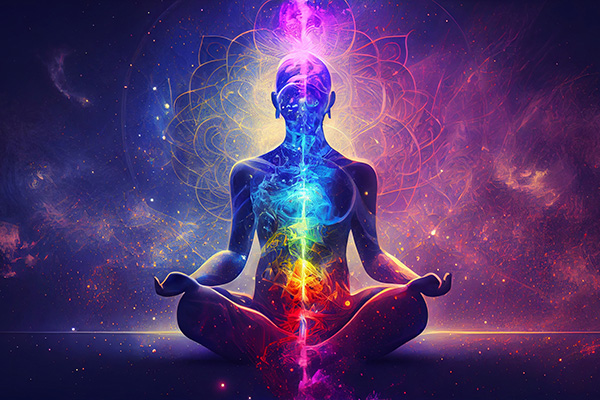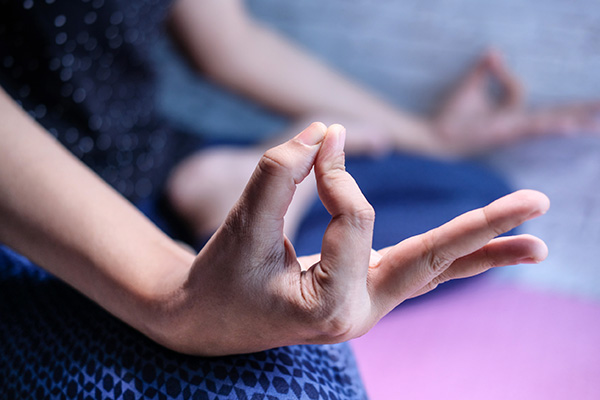Chakras
A Beginner’s Guide To Forest Bathing
 The spiritual healing practice of forest bathing, also known as tree bathing or Shinrin-yoku, is more than just a casual walk in the woods. It’s a conscious, mindful immersion into the living energy of the natural world.
The spiritual healing practice of forest bathing, also known as tree bathing or Shinrin-yoku, is more than just a casual walk in the woods. It’s a conscious, mindful immersion into the living energy of the natural world.
In a time of constant motion and information, nature offers a different kind of wisdom. When you enter the woods with humility and presence, the trees respond. They speak in stillness, they heal without fanfare, and they remind us of the sacredness that lives in all things.
Originating in Japan in the 1980s, Shinrin-yoku was developed as a form of eco-therapy to combat stress, burnout, and disconnection from the land. But long before it became a modern wellness trend, it was an everyday way of life our ancestors took for granted.
At its essence, forest bathing invites you to slow down, breathe deeply, and reconnect with nature as a living, healing presence.
It isn’t about hiking or exercise. There is no goal to achieve. You don’t have to meditate, journal, pray, do or achieve anything at all. Simply being with the trees and plants is enough.
When we stop and listen, we realize the forest has its own language, and it welcomes us into an ancient dialogue of peace and renewal. Trees are masterful purifiers. They filter the air of toxins and breathe out oxygen rich with life force.
When we stand near trees, they seem to do the same with our energy. They absorb some of our anxiety, tension, and fear, and offer us steadiness, grounding, and quiet wisdom in return.
Seeing The Real World Of The Heart
 As a woman and mother, I have questions about things happening in my world. As an intuitive empath, I receive questions that others have about things happening in their world. A recent experience sums up what I consider to be the most reliable source of inner wisdom, and where answers can be accessed by all of us.
As a woman and mother, I have questions about things happening in my world. As an intuitive empath, I receive questions that others have about things happening in their world. A recent experience sums up what I consider to be the most reliable source of inner wisdom, and where answers can be accessed by all of us.
I was awake one night with the energetic sensation of a specific situation permeating my experience. I could feel the energy in each expansion of my chest, as I inhaled. It filled my every breath, my every sense. My mind questioned, but I heard the guiding whisper of God in my soul say, “The real world is in the heart.”
There are spiritual dimensions of reality that are deeper, finer, subtler, more substantial than what is evident on the surface in the physical world. The door that opens to them is within the heart. There is truly more than meets the eye.
This realization reminded me of the illustration plates in the anatomy section of my parents’ encyclopedia, which fascinated me when I was a child. It wasn’t the human body per se that so intrigued me; it was the way the transparencies overlaid one another to form the whole picture.
At the top of them all was the skin, creating a picture of a human the way I was accustomed to see. As I turned the first page, I got a glimpse of something I had felt but never seen directly before with my eye, namely muscles. Page by page continuously showed deeper levels of anatomy beneath the surface, including the circulatory system, organs, and skeleton.
The Mysteries, Messages And Magic Of Meteorites
 Meteorites have long intrigued me as one of the great mysteries of the universe. They’ve fascinated me for years, not only because they survive their fiery descent through Earth’s atmosphere in such an epic and awe-inspiring way, but also because of their extraordinary origins.
Meteorites have long intrigued me as one of the great mysteries of the universe. They’ve fascinated me for years, not only because they survive their fiery descent through Earth’s atmosphere in such an epic and awe-inspiring way, but also because of their extraordinary origins.
Recently, I acquired a small piece of meteorite from Campo del Cielo, a renowned celestial fragment discovered by Spanish explorers in Argentina in 1576. It now graces my altar with it cosmic presence, enhancing the energy of my home and sparking some fun conversations!
Their origins are diverse. Some come from asteroids or comets, others from planetary bodies.
However, what I find especially captivating about these “messengers from space” is that they offer more than just scientific insights into the birth of our solar system.
Even more compelling is the spiritual and esoteric significance they’ve held throughout human history. Across time and tradition, they continue to be revered as powerful allies in spirituality and metaphysics.
Many lithotherapy practitioners believe meteorites are gifts from the divine, reminding us of our eternal connection to the cosmos. They are symbols of spiritual awakening, transformation, and divine wisdom.
Ancient civilizations used them for meditation and healing, to connect with higher realms, and to catalyze personal growth. Because they are quite literally “otherworldly,” meteorites offer us a cosmic perspective and invite us to reflect on our place within the grand tapestry of existence.
Simple Energy Cleansing And Clearing Techniques
 Everything in the universe is energy – so are you. In addition to our physical body, we also have a subtle energy body consisting of various layers, including the aura or energy field, the chakras or energy centers, and various smaller energy channels and points.
Everything in the universe is energy – so are you. In addition to our physical body, we also have a subtle energy body consisting of various layers, including the aura or energy field, the chakras or energy centers, and various smaller energy channels and points.
To be holistically healthy and happy it is therefore important to not only take care of the physical body (which is undoubtedly also very important and unfortunately too often neglected), but also the energy body. Our energy body can become unbalanced and even dis-eased with toxic patterns, old blockages, repressed negative emotions and deep energy imprints of trauma. It is vital for our spiritual, mental, emotional, and physical well-being to regularly cleanse and maintain our energy body.
In addition, as spiritual beings in humans form we are all energetically connected to each other and therefore we are affected daily by the energies of others. And the truth is that many people in our everyday environment have unhealthy and even toxic energy bodies that are not exactly emanating good, positive vibrations.
For example, you are in a happy, energized mood when you visit relatives or friends, and although everyone in the room outwardly appears to be doing perfectly fine, you soon begin to feel energetically drained or experience unusual emotions, such as suddenly feeling depressed, anxious or angry. This may well be due to someone else’s energy frequency present in the room. Energy never lies, even when we pretend or try to hide it.
The more empathic and highly sensitive we are, the more likely it is that we will intensely feel these environmental energies. A regular energy cleansing is vital to neutralize and shield us from external toxic vibes. I am such a person myself, and I have learned the hard way how destructive it can be when I neglect my energetic self-care and spiritual cleansing.
Transform Your Energy With Color Meditation
 Did you know that color therapy can balance and enhance your life emotionally, physically, and spiritually? It’s true! Colors are not just visual experiences. They are frequencies of light that interact with our own energy field, impacting how we feel, think, and behave.
Did you know that color therapy can balance and enhance your life emotionally, physically, and spiritually? It’s true! Colors are not just visual experiences. They are frequencies of light that interact with our own energy field, impacting how we feel, think, and behave.
Through the ages mystics, healers, and shamans have known what modern holistic practitioners are rediscovering: color is a potent healing tool.
From the fiery strength of red to the tranquil peace of blue, the visible spectrum offers a rainbow of resources for personal transformation. Every color carries its own vibration, and these subtle energies can be harnessed intentionally to support healing, clarity, and spiritual growth.
It can be used to stimulate your chakras, enhance your aura, and create harmony between your inner and outer worlds.
One profoundly effective way to connect with the power of color is through visualized meditation. When you consciously focus on a specific color during your meditation practice, you create a sacred bridge between intention and manifestation.
This focus calibrates your energy field to resonate with the energetic essence of that color to benefit your mind, body and soul.
The key to using color effectively is to align it with your current emotional or energetic needs. For instance, if you seek renewed optimism and joy, immerse yourself in the golden glow of yellow. Feeling emotionally tender or overwhelmed? A soft green can soothe and restore your heart. Rich reds can energize and ground, while blues invite calm and clear expression.
From Resentment To Radiance: The Power Of Forgiveness
 As a Kundalini yoga instructor, I’ve come to understand forgiveness as much more than just an act of kindness or compassion. It is a sacred healing practice — an essential release and transmutation of toxic energy held within the subtle body.
As a Kundalini yoga instructor, I’ve come to understand forgiveness as much more than just an act of kindness or compassion. It is a sacred healing practice — an essential release and transmutation of toxic energy held within the subtle body.
My work as a Reiki healer and psychic reader has deepened my understanding of this concept. I’ve witnessed firsthand how unresolved emotional pain, bitterness and resentment can create stagnation in our energetic pathways, dimming our vitality and obstructing our intuitive abilities.
In both healing sessions and psychic readings, I’ve seen forgiveness spark remarkable shifts in people’s physical, mental, emotional and spiritual well-being.
In the Kundalini Yoga tradition, forgiveness is not merely a moral ideal. It is a profound energetic cleanse. When we cling to resentment, anger, or betrayal, we create dense energy imprints, or emotional residue, in our aura and chakras, especially around the heart center (Anahata). These blockages disrupt pranic flow, dull intuitive perception, and limit our capacity to experience divine love.
My yoga teacher, Yogi Bhajan, often reminded us that the fastest route to healing and happiness is to forgive completely and limitlessly. He taught that true forgiveness requires releasing the subconscious “recordings” and emotional patterns etched into both hemispheres of the brain — patterns that replay pain and perpetuate karmic loops. “Forgive, release, learn, love, and excel,” he would say. Continue reading
How Mudras Connect Mind, Body and Soul
 Have you ever wondered why some people hold their fingers in unusual positions while meditating?
Have you ever wondered why some people hold their fingers in unusual positions while meditating?
These sacred hand gestures, known as mudras, are not just meant to “look cool” — they are a powerful energetic practice rooted in ancient spiritual traditions. They are intentional postures designed to channel energy, focus the mind, and deepen spiritual connection.
Mudras are an integral part of many spiritual lineages, most notably Kundalini Yoga – an energetic healing science that dates back thousands of years – as well as Hinduism, Buddhism, Jainism, classical Indian dance, and yogic disciplines.
Its origins can be traced back to the Vedas, the oldest sacred texts of Hinduism, where mudras were used in rituals to invoke divine blessings and spiritual power.
Over the centuries, these gestures have evolved into essential tools within yoga, tantra, and meditation practices. Their purpose: to help the practitioner direct subtle energies, sharpen awareness, and align with a higher consciousness.
In Sanskrit, mudra means “seal,” “sign,” or “gesture.” Far from mere physical postures, these gestures connect body, mind, and spirit, forming an energetic circuit that speaks directly to our auric field. Each mudra is a subtle energetic signal – each finger position resonating with specific astrological influences, emotional states, and elemental energies.
While some mudras involve the entire body, most are performed with the hands and fingers. Their effects are both profound and practical, enhancing spiritual practice, supporting healing, and facilitating the flow of life-force energy (prana or chi) through the body.